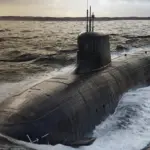A backlogged safety recommendation is less likely to be resolved satisfactorily than one that is settled routinely, according to an ASW analysis of about three dozen cases in which National Transportation Safety Board (NTSB) officials met with the Federal Aviation Administration (FAA) counterparts to resolve their differences. The meetings were convened under the aegis of the NTSB's SWAT program, an acronym that stands for "Safety With A Team." The SWAT moniker is suggestive of police SWAT (special weapons and tactics)…
Contract Updates
UPDATE: Eagle Safe Surfaces Colorado Inc. (Englewood, Colorado (SPE8EC-26-D-0006) – $139,000,000),
UPDATE: Eagle Safe Surfaces Colorado Inc.,* Englewood, Colorado (SPE8EC-26-D-0006, $139,000,000), has been added as an awardee to the multiple award contract for snow removal equipment, issued against solicitation SPE8EC-21-R-0008 and awarded Jan. 20, 2023. The contracting activity is Defense Logistics…
AvKARE LLC (Pulaski, Tennessee) – $12,915,328
AvKARE LLC, Pulaski, Tennessee, has been awarded an estimated $12,915,328 firm-fixed-price requirements contract for telmisartan tablets. This was a competitive acquisition with nine responses received. This is a one-year base contract with four one-year option periods. Locations of performance are…
Bernard Cap LLC (Hialeah, Florida) – $18,857,146
Bernard Cap LLC,* Hialeah, Florida, has been awarded a maximum $18,857,146 firm-fixed-price, indefinite-delivery/indefinite-quantity contract for green service uniform garrison caps. This was a competitive acquisition with six responses received. This is a five-year contract with no option periods. The ordering…
Science Applications International Corp. (Reston, Virginia) – $26,253,706
Science Applications International Corp., Reston, Virginia, has been awarded a $26,253,706 cost-plus-fixed-fee contract in support of Air Force modeling simulation sustainment support. The Air Force modeling and simulation services support (AFMS3) contract provides comprehensive support to the Department of the…










